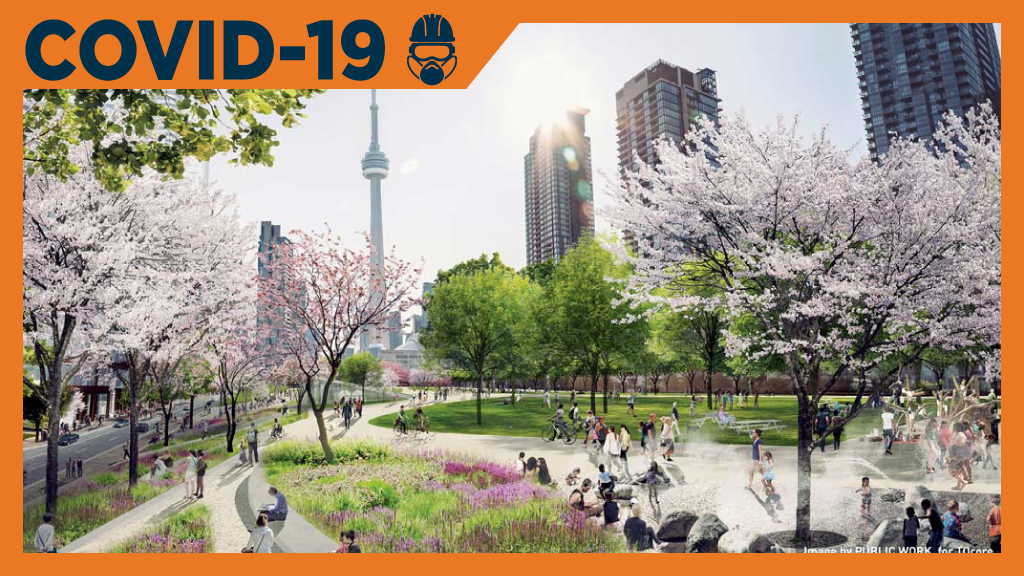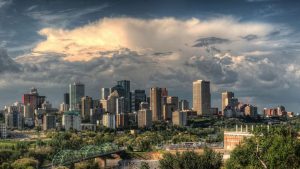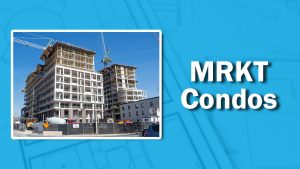Municipal planners should be treating parks in use in large cities during the COVID-19 pandemic as living laboratories offering valuable lessons on the way greenspaces should be planned in the future.
That was a key recommendation issued by panellists speaking during the Future of Public Space webinar presented recently by Toronto’s Ryerson City Building Institute (CBI).
The parks experts also urged city builders to view greenspaces as fundamental pieces of infrastructure alongside roadways and water services and to take notes from bold active-transportation measures being implemented in Milan, Berlin and Mexico City during the crisis.
“I think everyone will agree that we’ve seen our parks and greenspaces used and appreciated like absolutely never before (during the pandemic),” said panellist Dave Harvey, executive director of the advocacy group Park People and former adviser to the Government of Ontario on the Greenbelt Act and growth plan policies.
“It’s more commonly held now that parks are absolutely core urban infrastructure. It’s not a nice little amenity, it’s as essential as roads or water or sewers.”
Harvey appeared with Dr. Anne Harris, an epidemiologist at Ryerson University with a research focus on active transportation. The moderator of the May 6 session was Cherise Burda, executive director of the CBI.
In another development the day of the webinar, the City of Toronto announced an outline for its new ActiveTO program, being developed “to provide more space for people walking and cycling as well as transit riders to allow for better physical distancing as part of the city’s restart and recovery from the pandemic,” according to a statement.
The statement said elements to be developed include creating quiet streets; using major streets for active transportation; and expanding the city’s cycling network.
The panellists said Toronto has been late to the game in realigning city streets and sidewalks to keep citizens safe and encourage new active-transportation patterns.
“The one we know that’s been making a lot of headlines is Milan, transforming 35 kilometres of streets to expand cycling and pedestrian space after the lockdown is lifted this summer, and many other cities are proposing similar measures,” said Burda.
Vancouver has banned cars in Stanley Park to create more space for pedestrians and France has expanded roads for cycling during the pandemic and is also adding new cycling lanes along Metro subway lines as a new transportation alternative, Burda also noted.
In April, Harris and other signatories wrote an open letter to Toronto Mayor John Tory and Toronto Medical Officer of Health Dr. Eileen de Villa calling for more cycling and pedestrian space to achieve safe physical distancing during the pandemic.
Harris told the webinar audience that Toronto seemed to be leaning towards treating cycling and walking as optional modes of transportation.
“We wanted to make sure that it was understood that many people rely on sidewalks and bicycles for their essential transportation,” Harris said.
Harvey stressed that greenspaces must be viewed as essential to public health and that more sophisticated approaches to incorporating them into the fabric of the city must be developed, building upon such assets as greenspace corridors that have taken root in the city.
He praised the Green Line Hydro corridor parkland running from Davenport and Macpherson towards Earlscourt Park as a worthwhile City of Toronto initiative.
“Networks of parks and greenspaces and how we move around in a safe, creative way aren’t just nice to have, they’re needs to have,” he said. “We’ve done a good job in many parts around the GTA around this but as our city is becoming more and more dense we’re creating neighbourhoods that don’t have enough greenspace,” he said. “The lack of greenspace is a real significant issue that’s been highlighted by COVID.
“It makes things like the rail deck absolutely vital for that neighbourhood going forward.”
Follow the author on Twitter @DonWall_DCN.











Recent Comments
comments for this post are closed